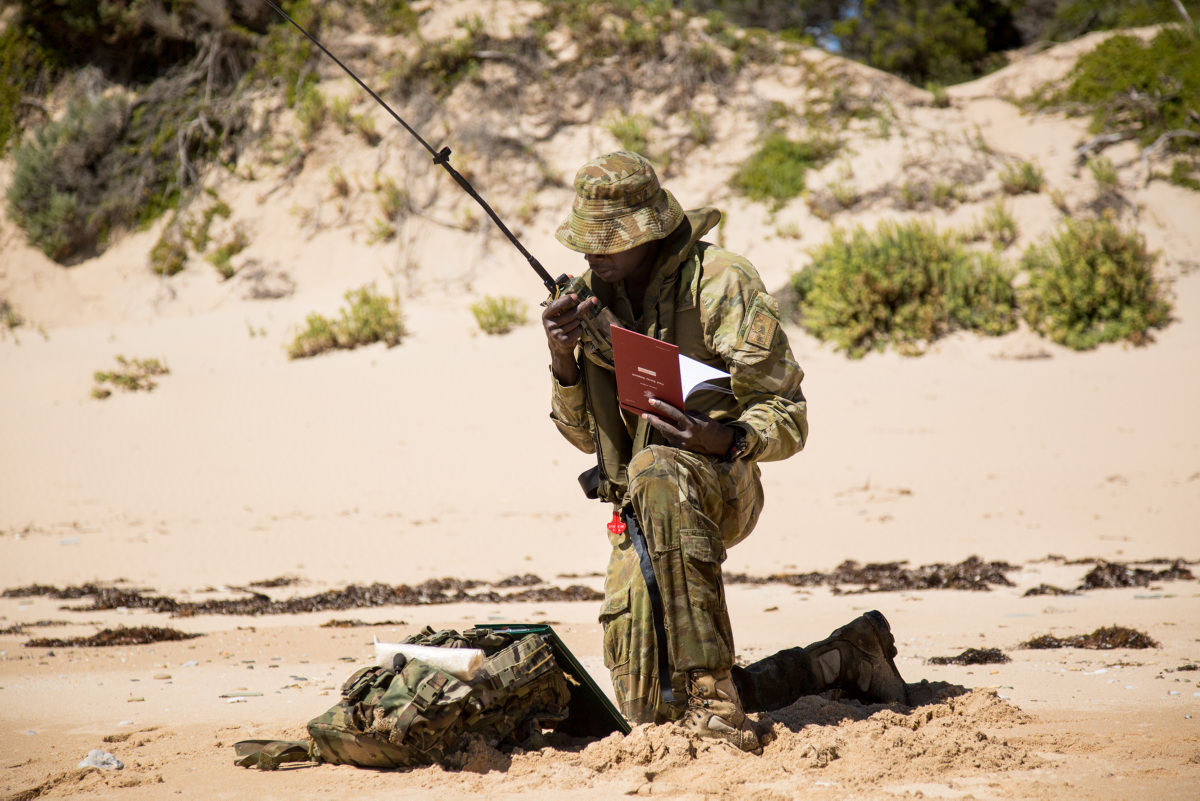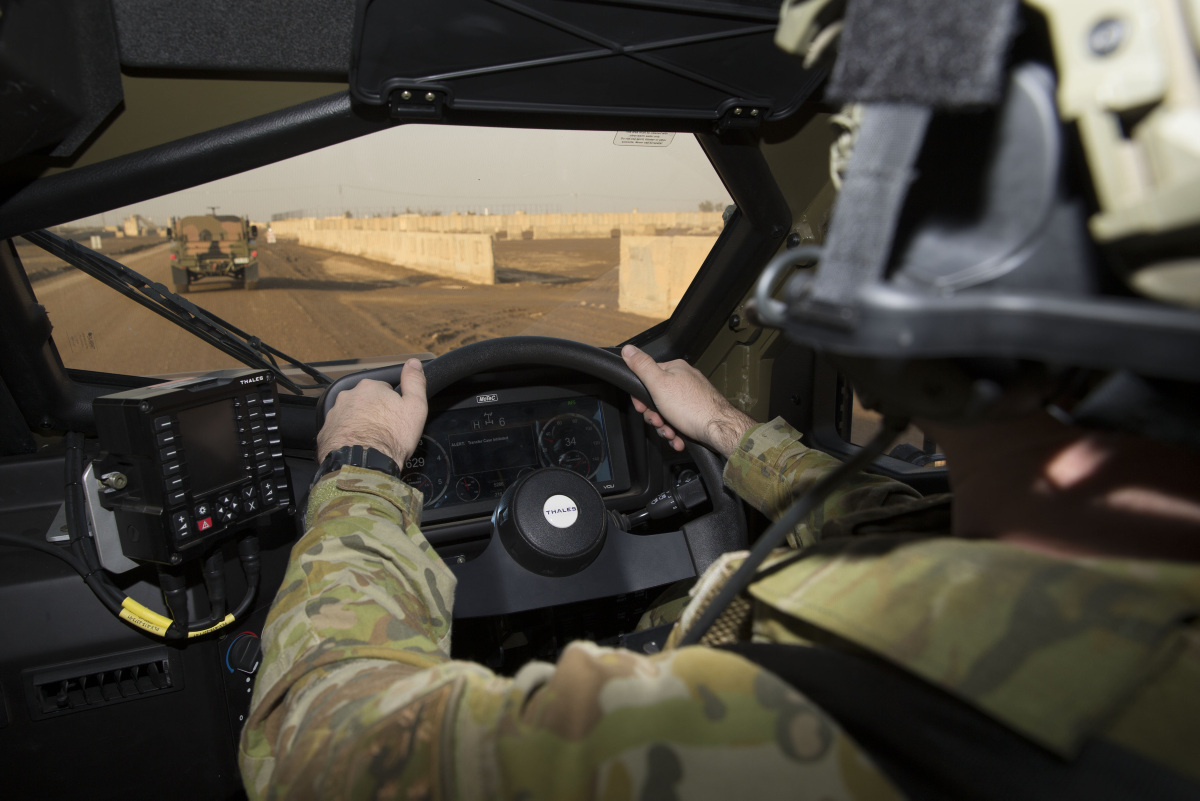By David Beaumont.
A common trend found in the literature of military logistics is the decrying of training and education gaps interspersed within the persuasive arguments for greater military interest in logistics. Lieutenant Colonel George Thorpe’s systemic and structural analysis of logistics in Pure Logistics, recommended in the 2017 Commander Forces Command’s reading list, contains two parts with the second being a substantial discussion on the importance of professional military education.[i] Thorpe saw that efficient logistics was a function of two factors; power and knowledge. The roots of power in a military environment are self-evident, tied to effective command and enabled by governance. The quality of knowledge possessed by the logistician, enabled by a coherent approach to professional military education, was similarly vital to ensuring that logistics could ‘set the stage’ for future operations.
The Australian Army has worked hard in recent years to improve the quality of its individual training, much as Thorpe desired of the USMC his work. One hundred years after Thorpe’s precis appeared, the Ryan Review, reflected on a similar need to revitalise individual training within a Service approach overly focussed on collective training outcomes. Ryan’s team worked as Army reflected upon two decades of continued operations, and sought to balance the benefits of training, education and experience in a strategic approach to improving the knowledge resident in Army. The contents of the review, now just over a year old, continue to be implemented through a range of efforts. The approach it advocates remains conspicuously relevant to the development of Army’s logisticians.
In a Transforming Army Logistics to support the Joint Land Force I argued that ‘logistics transformation must become the centrepiece around which the curriculum of logistics courses is based’ as Army considered its future requirements.[ii] Given the recent elevation and attention given to individual training, it would be intellectually lazy if Army’s logisticians failed to take the opportunity to examine the what, how and why of the training of its soldiers and officers. Effort made now reaps substantial benefits in the future, and logisticians are likely to be supported by an Army well on track to deliver lasting change. With the aim to produce discussion throughout 2018 on Logistics in War and elsewhere, the following six themes might be useful starting points for consideration as well as focus areas for change.
Challenge 1 – determine the right balance between integrated logistics and technical proficiency
An ideal balance between technical, or what an Australian Army logistician might call ‘special-to-corps’, training and integrated logistics has long been a topic of interest to Army’s senior logisticians. In some areas of officer training there has been a noticed decline in technical skills, and in their ability to engage effectively with their commanders as advisors and logistics leaders. Conversely, it is also desired that soldiers are better prepared to apply their technical knowledge in an integrated environment. Over time the balance between integrated logistics and technical skills has shifted for both soldiers and officers, but it does not seem that the logistics community is entirely comfortable with the conclusion. From getting employment specifications right to setting the curriculum for relevant training, there are a range of areas that warrant renewed attention to better balance such training requirements.
Challenge 2 – train the logistician to support capability creation and readiness, and not just operations
The adage ‘do in barracks as you do in the field’ is an important rule that is at the core of Army training and focus us at the tactical level. When applied in the right areas of Army it makes the transition from garrison to operational logistics more efficient, and prepares individuals and their units for the rigors of operations. However, we cannot forget that it is the logistics activities in garrison, captured in the idea of logistics readiness, that enables a force to deploy quickly and effectively. Efficient processes and policies, organisation, and systems which assure materiel and personnel availability across the entire force – the ‘business of Army’ – contribute to the opportunities available for elements which might actually deploy. Logisticians must be able to work with the contractors and support agencies relevant to the acquisition and sustainment of capability. Therefore, improving the standard of knowledge relevant to the preparation of forces in peace must be regarded a major goal of Army logistics training.
Challenge 3 – ensure single Service logistics training is integrated with broader professional development pathways
Since Army’s Adaptive Army initiative, individual training has been tightly bound into the broader training framework.[iii] Through a series of training levels, commencing with individual training, the officer and soldier will be deemed operationally ready with a major certification exercise such as the annual Exercise Hamel. It is also vital that this is accompanied with an approach to training that develops the individual as a professional, focussing on developing the attributes that will make the logistician successful from the span of junior to senior appointments. Army logistics training must complement, and be complemented by, the suite of generalist, combat, Joint and education opportunities that are offer within the ADF.
Challenge 4 – broaden the profile of the logistician
Not all logisticians will serve within the combat formations or units in which Army logistics training tends to emphasise. Many first appointment officers and soldiers will serve in enabling formations and units, in the Joint environment and other areas. This disjunction between training and employment may, in some case, feature throughout a logistician’s career; a problem especially notable with respect to those who spend time in technical and capability management areas of Defence. In order that the logistician is more effective in such appointments, for reasons of proficiency and so that they may enhance Army’s broader contribution to the joint force, a broadened approach to the training of logisticians is warranted.
Challenge 5 – prepare logisticians for a period of profound capability change, and an uncertain future
Army is approaching a period in which a number of key capability platforms including its transportation, armoured fighting vehicles, communications equipment, logistics information systems, health capabilities and others will be replaced or transformed. These projects promise to profoundly change the way Army raise, trains and sustains, and– if employed correctly – will most certainly change the joint land force operates on the battlefield. In this environment of rapid shifts to capability concepts and doctrine must be adaptive, and training must be innovative. It will be an environment where the quality of training will directly determine how useful these remarkable systems will be, and the opportunities they offer the land force.
Challenge 6 – produce the optimum, and strive for the ideal
The resources available to deliver the ideal in training are not available. Institutions such as the Army Logistics Training Centre may not ever be equipped and manned to achieve everything for the logistician that we hope. Desired training may prove impractical, impossible expensive, or simply beyond the capacity of a member of the Service to deliver. It is, however, always possible to achieve the optimum whatever the circumstances. Empowered by a strategic approach to developing professional logisticians, establishing the optimum in training is a function of individual and collective leadership. When resources may be made available, having optimised training postures the trainers to effectively articulate why additional resources may be required and how training can be reviewed.
The six challenges may suggest to some that the system is inadequate. The training system supporting the development of Army’s logisticians is already producing good outcomes; the evidence is in the quality of support to operations. However, there is no denying that it is a training system based upon necessity, evolved through compromises and endured resource pressures. There are pathways to improving the training of logisticians, and addressing the challenges describe here could result in short term changes which result in long-term benefits to Army. In the wake of the 2016 Ryan Review, and Army’s clear desire to improve the quality of individual training, it is important that all of Army’s logisticians contribute to the debate as to what really matters in soldier and officer training. Otherwise we might find ourselves in Thorpe’s position, frustrated and reflecting upon an abrogation of professional responsibility.
These challenges may help to provide some focus, if not some contention, to the discussion. I hope to hear your views.
David Beaumont is a serving Australian Army officer. The thoughts here are is own, and do not reflect any official position.
[i] Thorpe, G.C. Pure logistics: the science of war preparation, National Defence University Press, 1986, available as an electronic resource through the National Library of Australia, https://catalogue.nla.gov.au/Record/3838107
[ii] Beaumont, D.J. Transforming Army’s Logistics to support the Joint Land Force, Australian Army, 2018, https://www.army.gov.au/sites/g/files/net1846/f/transform_logistics_b5_faweb.pdf, accessed 29 Jan 18, p 59
[iii] See Breen, B., Preparing the Australian Army for Joint Employment: a short history of the Adaptive Army initiative 2007-2010, Australian Army, 2014, https://www.army.gov.au/sites/g/files/net1846/f/adaptivearmy_breen.pdf, accessed 29 Jan 18




